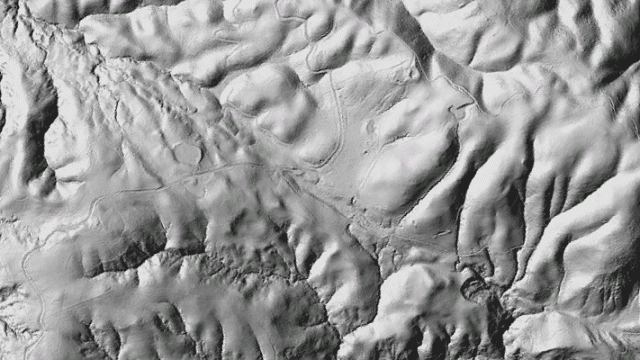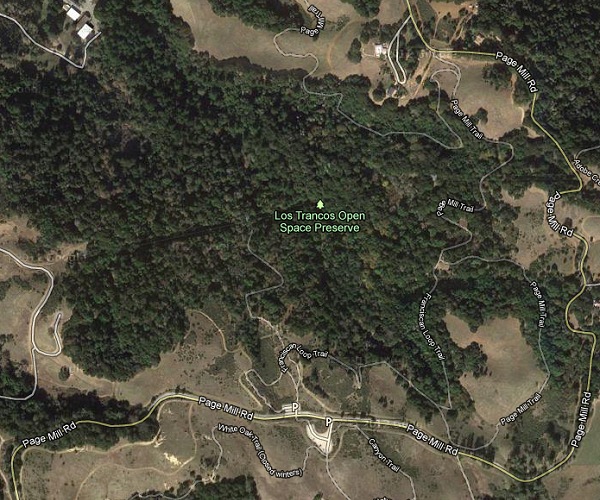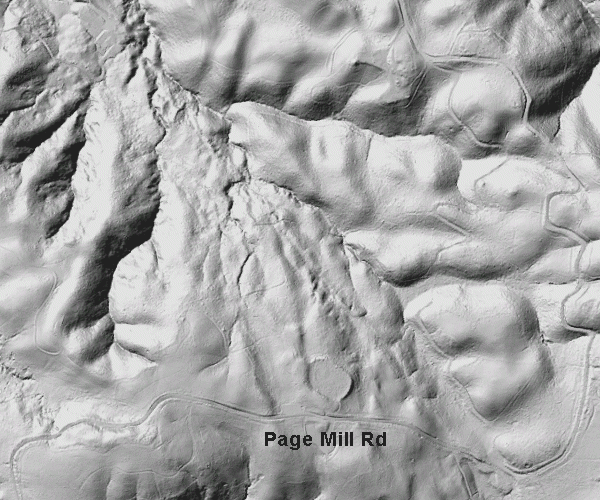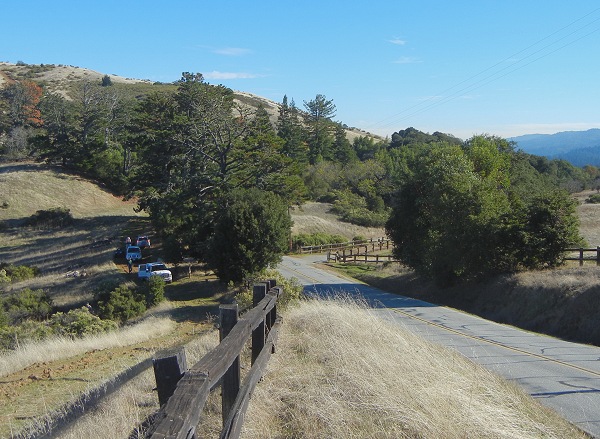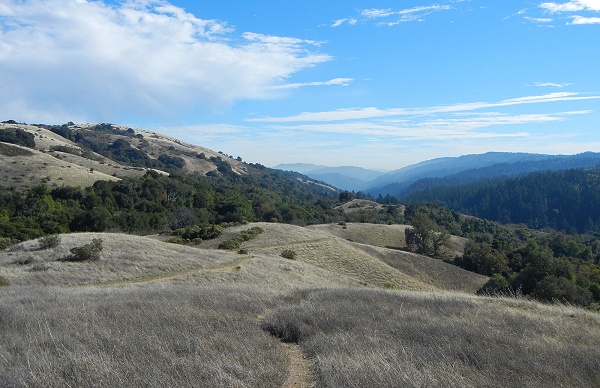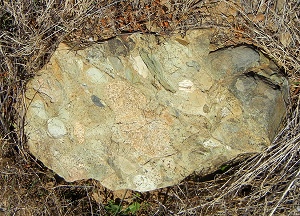
Due south of Stanford, way up in the high hills, Los Trancos Open Space Preserve offers an excellent place to study the San Andreas fault. The preserve has a well-annotated trail that will show you good examples of the odd landforms and disturbances found all along the fault from Point Arena to the Salton Sea. Craig Rosa presented this trail for KQED QUEST a few years ago, and I can't improve on that. But since that time, geologists have gained a thrilling new tool for seeing landscapes: lidar mapping.
Lidar is laser-based radar. An airplane-mounted laser sprays the ground with tiny, precise laser pulses, and the time it takes for the light to return is measured. Our equipment is good enough to turn those times into distances, with precisions measured in centimeters. Every one of those millions of measurements—distances and GPS positions—is painstakingly recorded and poured into a database called a point cloud. It's a cloud because it's a blurry mixture of returns from treetops, shrubbery, buildings, flying birds and whatnot as well as the ground surface. But all that cruft can be digitally removed to show only what geologists care about: the bare land. (Foresters, on the other hand, love the way you can extract the treetops and map the woods itself.)
Here's what Los Trancos looks like in Google Maps. The San Andreas fault trail runs through thick oak woods in the valley of Los Trancos Creek. The fault itself runs from an inch right of the top-left corner to an inch left of the bottom-right corner.
See it? Not really. The fault trace was mapped by people in boots, with the help of historical photos that showed the rips in the ground from the 1906 earthquake. Now have a look at the digital elevation model built from lidar data and digitally illuminated from the left.
